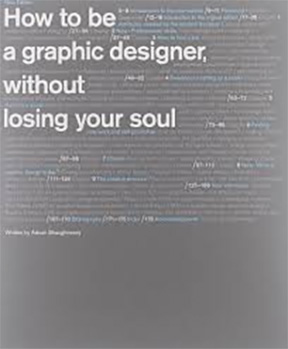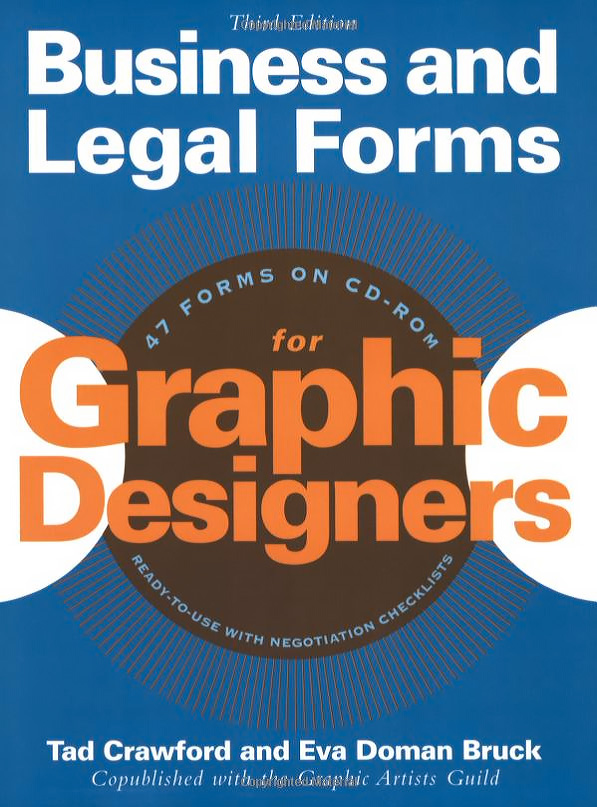LOCATION
Arbury Mac Lab 162
10 January 2023 - 27 April 2023
Tuesdays & Thursdays, 1:00PM - 3:50PM
INSTRUCTOR
J. Blake Johnson
jbjohns1@svsu.edu
Arbury Fine Arts 117 – 989 964-2255
OFFICE HOURS
Mondays & Wednesdays, 10:00am–12:00noon
or one hour as arranged.
HEALTH SAFETY
The university administration has determined most students want face-to-face classes. In order to hold classes safely we will need to practice five health safety measure due to COVID-19:
• Daily Health Self-screening
• Wear Masks / Face Coverings
• Practice Physical / Social Distancing
• Consistent Hand Washing / Sanitizing
• Being Considerate of Other’s Health
To learn more, visit…
Students should wear their own face coverings they have made or purchased. If unable to purchase or make their own, students should obtain face coverings through the Office of Student Affairs by emailing studentaffairs@svsu.edu. Students are expected to follow face covering requirements inside all buildings on campus except private residential units.
If a student is not wearing a face covering in accordance with this policy, a polite verbal request for compliance should be made to educate, encourage, and persuade individuals to wear face coverings.
If a student refuses to comply with this policy, report the Student Code of Conduct violation in writing to rabideau@svsu.edu. Students who are medically unable to tolerate a face covering must contact the Office of Accessibility Resources and Accommodations accessibility@svsu.edu for guidance.
IN-PERSON COURSE
We are starting this term with the intent of having in-person classroom instruction for the entire term. Our approach may change due to COVID numbers for everyone's health saftey.
I encourage you to do your part so we can continue on with in-person learning.
Just because the course material is online, treating it as an online class is not an option.
ATTENDANCE
When you are in good health, you are expected to attend all classes for the entire semester on the days and times you are required to attend.
Before attending class you are asked to check in using the Daily Health Screening app. If you do not pass the self-screening, you are expected to take the needed precautions such as seeing a medical doctor about your condition. You will not be required to attend classes on days that you do not pass the self-screening, but you will need to show proof of a doctor’s note, showing that you are taking the needed medical precautions for good health. You are expected to return to class as quickly as your health improves.
All absences, due to poor health, accompanied with a medical doctor’s note, will not be counted against the student’s grade.
Attendance will be taken during each class period.
Attendance is mandatory for a passing grade. All students are expected to meet as a class in the designated time and place. An unexcused absence will be given to students who fail to do so. The attendance standards are as follows:
• Three absences = a lower grade by one letter
• Four absences = a lower grade by two letters
• Five absences = failure of the course
TARDINESS
Tardiness is defined as arriving five minutes after class starts or leaving more than 10 minutes before the end of class.
Three marks of tardiness is equal to one unexcused absence. A note will be made of late arrivals and early departures. An unexcused absence will be given to students who are more than a half hour late for class or who leave a half hour before the end of class.
COURSE DESCRIPTION
This capstone course is specifically formulated to prepare students to enter the professional design field. The course prepares students to professionally market their work and skills in the field. Prerequisites: Art 250, 260, 350, 355, 365, 370, and 430.
COURSE OBJECTIVES
Help the students learn:
• create a self-promotional portfolio - in both a physical and web format
• refinine previously completed classroom work & improve areas of deficiency
• establish students’ competence in design knowledge and skills
• improve presentation skills & self-marketing strategies
• produce a résumé suitable for gaining employment
REQUIRED TEXT
How To Be a Graphic Designer Without Losing Your Soul
by Adrian Shaughnessy
Other articles and book passages may also be provided.

OPTIONAL TEXT
Business and Legal Forms for Graphic Designers
by Eva Doman Bruck and Tad Crawford

PROJECTS
There will be fourteen assignments during this semester.
The schedule is subject to revision at anytime at the discretion of the instructor. The final number of projects may change based on the speed/skill of the class.
PROJECT POINTS
A breakdown of points possible:
1 Research Assignment 25
2 Plan Assignment 25
3 Core Assignment 100
Results Portfolio Review 1 100
Results Portfolio Review 2 100
Results Portfolio Review 3 100 - Saturday attendance possible
Results Portfolio Review 4 100 - Pass/Fail
Chapter Summary Chapter 1 25
Chapter Summary Chapter 2 25
Chapter Summary Chapter 3 25
Chapter Summary Chapter 4 25
Chapter Summary Chapter 5 25
Chapter Summary Chapter 6 25
Chapter Summary Chapter 7 25
Total point possible: 725
Turn in project work to graphic server before midnight on the Friday the work is due.
GRADES AND LEARNING
Work will be assessed based on the quality of the concept, the use of the design principles in support of the concept, and the level of craft in execution. To further explain grade/assessment criteria:
A - sound application of design/typographic principles in support of strong concept, excellent craft.
B - design/typographic principles mostly support concept, good craft.
C - design/typographic principles present but do not support concept, fair craft.
D - basic understanding of design not demonstrated, weak concept, poor craft.
F - no evidence of understanding design, weak or no cohesive idea.
GRADE SCALE
Key project grades are based on an 100 point scale.
Superior
A 93 and above
A- 90 - 92
Very Good
B+ 87 - 89
B 83 - 86
B- 80 - 82
Average
C+ 77 - 79
C 70 - 76
Below Average
D 60 - 69
Failing
F 59 and below
RECORD OF STUDENT WORK
For the purpose of recruitment and promotion, your instructor may be collecting images of your work. Your work may be published in many forms such as on a website or other computer generated advertising.
In addition, the Department may be taking photographs of students and instructors in classroom for the same purpose. Please contact the instructor or the chair of the Art Department, Shaun Bangert, sbangert@svsu.edu, if you do not wish your work or images of yourself to be reproduced or published. We will honor your request.
NON-DISCRIMINATION
SVSU does not discriminate based on race, religion, color, gender, sexual orientation, national origin, age, physical impairment, disability, or veteran status in the provision of education, employment, and other services.
COURSE CONTRACT
Read the entire syllabus carefully. Staying enrolled in this course after reading it will constitute that you understand and agree to follow the requirements and rules of the class as described.
It also will constitute that you understand and agree to receive the point deductions, and to face some academic consequences if you do not follow them accordingly.
STUDENT RESPONSIBILITIES
Exercise creativity and experiment within the parameters of each assignment.
Be open and willing to learn new design principles and design styles.
Prepare for class. Come to class ready to learn. Stay focused and attentive in the classroom. Avoid distractions such as electronics or talking with classmates. Students who violate this rule will have two points deducted from their final grade. In addition, do not leave the classroom during class time, except in case of an absolute emergency.
PRESENTATION AND CRITIQUE PARTICIPATION
Students will present their conceptual ideas to the class during the final project critique. All students are expected to share their ideas with the class, explain what is successful with the piece and learn how the design can be improved. Use a professional and respectful tone while discussing the work of your peers. Critiques should never feel like a personal attack.
Make an effort to be as open to feedback as possible. Feedback should resonate with you as you develop in your design practice. Try to avoid deflecting comments.
COPYRIGHT POLICY
All images used for your projects must be original. This includes, but not limited to, photography, logos, graphic design works, painting, drawings, 3D works, and such. Your work cannot be directly copied from books or ‘taken’ from the web or any other resources.
The Saginaw Valley State University Policy Regarding Copyright briefly outlines those parts of the U.S. Copyright Law which apply to educational institutions. Please see below link for SVSU policy…
LATE WORK
Late work will be accepted, but a 10 point grade deduction will always apply. The instructor’s permission is needed to turn work in late. However, no late work will be accepted two days beyond the project’s due date.
ACADEMIC HONESTY
Cheating will not be tolerated and all cases of cheating will be reported to the Office of Student Conduct Programs. Using someone else’s design or written work as your own, in any form, is recognized as plagiarism. Note: the use of AI tools for your assignments in this course is considered a form of plagiarism.
We will respond to academic dishonesty in one of three ways depending on the depth and nature of the offense:
• You may be asked to repeat the project using your own ideas and work.
• You may be assigned a failing grade for the course in accordance with University regulations.
• A file may be established with the Dean of Students to record the incident, in case of repeated offenses.
ELECTRONIC DEVICES
It is the policy of the Department of Art that the use of electronic devices such as cell phones, laptops, tablets, etc., for personal reasons unrelated to the course is absolutely prohibited and will result in some form of demerit. Violators will be reported to the Department Chair.
A student found using an electronic device for working on a different class project, texting, viewing facebook, streaming video, etc., during class work hours, will suffer a two point penalty on their final grade for every incident. The computers are to be used as classroom tools, not as entertainment.
Turn off/silence your cell phones and leave them in your backpack/purse. Students who violate this rule will have two points deducted from their final grade.
Note: the recording of lectures is only permitted with a letter from the Office of Disability Services. Students must get permission from the instructor before using a laptop to take notes in class.
COMPUTER WORK
All of the finished work done in this class is to be completed by computer.
The highest goals of the class are…
A). to develop portfolio level pieces
B). master presentation skills
C). gain advanced software skills
D). and the mastery of design principles
COMPUTER PROBLEMS
Do not use technical problems as an excuse to hand in your work late.
Computers and other electronics do fail. Have a backup plan if the files are lost or fail.
Students are able to use their own laptops as desired. However this may limit the instructor’s ability to solve file issues — as students may be using different operating systems, and different versions of the class software. If you would like more computer support please use the computers supplied in the Mac Lab.
SUPPORT SERVICES
Please be advised that success in this course heavily relies on the student’s ability to visually discern distinctions within slide and video presentations. Reasonable accommodations are available for students who have a documented disability. Students with disabilities who seek accommodations must make their request by contacting the Office of Accessibility Resources & Accommodations.
Please notify the instructor during the first week of class of any accommodation(s) needed for the course. All accommodations must be approved in writing through Accessibility Resources & Accommodations (formally known as Disability Support Services). For more information see: https://www.svsu.edu/access/ or send an email to: access@svsu.edu
All arrangements with Accessibility Resources & Accommodations must be made before the end of the 6th week of the term. No contracts will be accepted afterwards. Instead the standards outlined above will stand as the contract for the grades and attendance for the term.
REQUIRED MATERIALS
Supplies for this class are estimated at $180 to $380
- textbook
- membership in AIGA or attendance to AIGA Portfolio Review
- portfolio case
- web registration/web hosting
- storage for portfolio files
- one solid state drive and / or
- two flash drives (16 GB or larger)


